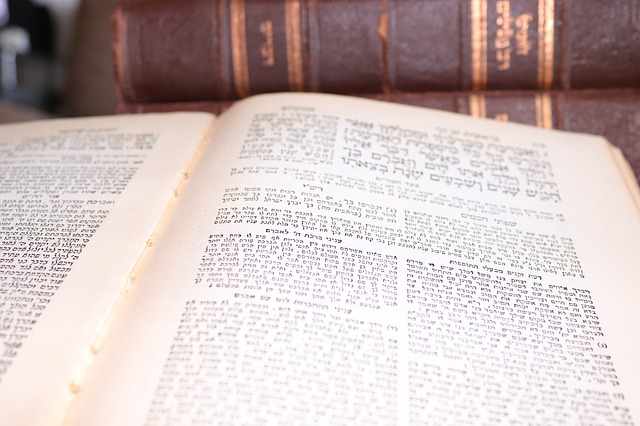Overview: In addition to laws that were transmitted orally to the sages at Sinai, other parts of the Oral Law include parts that were derived using the methods of biblical interpretation. These laws are the details of many commandments whose details are absent from the verse. This category as well can encounter disputes between the sages.
Known as midot shehatorah nidreshet bahen in Talmud lingo,[i] this category can be regarded as “derivation tools” or “methods of rabbinic interpretation.” It’s basically the way the sages interpret Torah to fill in the missing details. You see, even after the Written Torah was given along with an Oral Law filling in some missing points, there were still many laws that were not fully explained. Their basic application was understood but there were some details that still needed clarification. The sages got to work interpreting Scripture in attempt to deduce what the detail of the specific Mitzvah in question should be.
Their methods of interpretation were logical and self-obvious. We will not go through all of the different methods of interpretation, but we will bring one example to demonstrate the idea. See “Re-approaching Rabbinic Interpretation” for a comprehensive detailed discussion on the rationality of the other derivation tools.
The example derivation tool we will examine is the kal vechomer.
A teacher may tell their students that verbally bullying another student is punishable with a large money-fine. The teacher didn’t say that there’s a punishment for physically hitting another student, but it can easily be inferred from his or her words. If merely verbally assaulting another student is punishable, for sure hitting another student is not allowed and is punishable at least with a money-fine. This is learning the “superior” from the “inferior.” If the law is such and such by the inferior, most certainly the law is no less stringent for the superior, even if the law wasn’t mentioned for the superior.
The sages use this logic to interpret laws from one commandment to another. If a “lighter” commandment has a specific criterion or detail, for sure the “heavier” commandment should contain the same law, even though not explicit in the Scripture’s text.
This derivation tool, or method of biblical interpretation, is logical just like the remainder of the methods of biblical interpretation used by the sages are.
Basically, God allows for human analysis and reasoning to determine much details of the Law. This responsibility was put upon the great sages, particularly at the High Court, to derive using these logical reasoning and methods of biblical interpretation.
The Written Torah can be compared to the Constitution of a country and the later rabbinic enactments are like legislative produced by later generation’s judges. The idea of a Constitution is to lay out a vision for the country based on certain morals it finds to be true. Later legislators formulate the details of this vision and make them practical to the public is the best way the legislators see fit. The Constitution itself may be flexible which is why the legislators need to debate the details and establish a set ruling for the public.
The reason for why the system was created in such a way seems to be for two reasons: (1) The founding-fathers of the country didn’t have enough time to formulate all the rules, and (2) even if they did have the time, they wanted it to be up to the people. Being that democracies are based on governments of the people, by the people, and for the people, they found it fit to leave those details flexible and up for the later legislators to decide upon. Similarly, the Torah wanted the Jewish People to have a say in His Torah, to have a portion in it, to formulate the details as their leaders see fit.
Due to the flexibility of human reasoning, this category encounters much disagreement; this is despite the rules and guidelines that limit the arguments. This is because logic and reasoning itself is flexible and different intellectual points can both be made. The sages in the High Court would debate each other and examine each other’s points to determine which of the reasoning is most logical. Then, a vote was taken and the majority wins and the law was passed.
These methods of interpretation were used up until the closing of the Talmud, at which point the Mishnah became the new focus of learning in place of the Written Law. Instead of interpreting law through these derivation methods, the Talmudic-era sages decided to rely on their predecessors to formulate a Halachic decision.[ii]
See “Re-approaching Rabbinic Interpretation” for a discussion on the rationality of the derivation tools. Mainstream Orthodoxy sees these tools as divine and not necessarily logical, given to us by Moses at Sinai. But in that article, we take a different approach. We believe that these derivation tools are all logical, including the gezera shava and yitur and that they weren’t necessarily given at Sinai.
[i] See the 13 categorized by Rabbi Yishmael brought in the beginning of Sifra. Also see the seven tools categorized by Hilllel in the beginning of Toras Kohanim.
[ii] Mavo Letalmud, Hatalmud ch. 1 (page 51).





KETUBOT 11b1 promotes PEDOPHELIA WITH 3 YEAR OLD GOYIM GIRLS. DISGUSTING JEW CRAP.
Nasty libel. Ketubot 11b says nothing of that sort. Typical for pathetic Jew-haters like you.